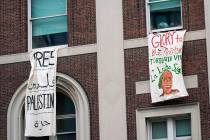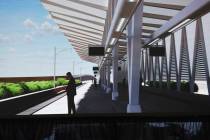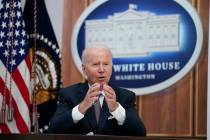Where does higher education funding go?
To the editor:
As a faculty member at the University of Nevada, Reno since 2000, teaching accounting, I recently fielded questions from students as to where the money is going in higher education. Today, students are rightly concerned with regularly increasing tuition rates and higher materials costs, while being faced with an economy that is just not that welcoming to new college graduates.
To better answer my students, and for my own curiosity, I have been doing much reading and research on this question. I found an interesting article in the September/October 2011 edition of Washington Monthly, written by Benjamin Ginsberg, titled “Administrators Ate My Tuition.” Mr. Ginsberg is a political science professor at Johns Hopkins University who argues that the growth in administrative expense has become a means to its own end, and that the quality of higher education in America is suffering.
So I decided to take a peek at the Nevada System of Higher Education from the year I joined UNR until 2011, the most recent data available. I was rather surprised to find that Nevada has been following the national trend articulated by Mr. Ginsberg: Growth in full-time administrative and support personnel has outpaced the growth in full-time faculty. The numbers gathered are from the Nevada System of Higher Education website, where employee head counts are currently listed from 1997 through 2011.
In 2000, the systemwide number of full-time faculty was 2,229, while total full-time employment was 6,423. At the end of 2011, there were 2,577 full-time faculty out of 7,677 full-time employees. So, although the number of academic faculty across the system has increased, it has not risen as fast as the number of nonfaculty employees. There was a net increase of 1,254 full-time employees, but only 348 of the additional hires were full-time faculty. Or, in simple terms, for each new faculty member, about 2.5 nonfaculty employees were added. I only looked at full-time employees, as these folks are the core for operating our higher education system. It is also important to note that there have been some institutional changes over these years, and that the 2011 figures reflect layoffs and buyouts that resulted from the recession.
Clearly, administrative and support personnel are critical to higher education. They are necessary to operating the institutions. But the basic question my students asked — Where does the money go? — is still hard for me to fully answer. This is not a simple issue. But the question deserves the attention of lawmakers. Nevada’s students, families and taxpayers are entitled to nothing less.
RICHARD MASON
RENO























